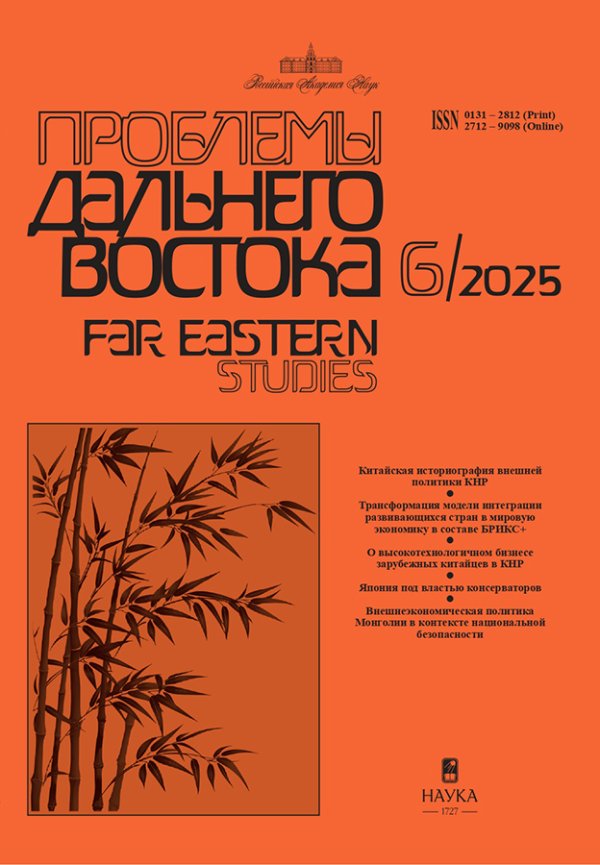China as a Focal Point of Japan's Security Strategy
- Authors: Kistanov V.O.1
-
Affiliations:
- Institute of China and Contemporary Asia of the RAS
- Issue: No 3 (2023)
- Pages: 40-57
- Section: Articles
- URL: https://journals.rcsi.science/0131-2812/article/view/142504
- DOI: https://doi.org/10.31857/S013128120026064-1
- ID: 142504
Full Text
Abstract
Keywords
About the authors
Valeriy Olegovich Kistanov
Institute of China and Contemporary Asia of the RAS
Email: pdvjournal@mail.ru
32, Nakhimovsky prospect, Moscow, 117997, Russian Federation
References
- Джеймс Браун. Китай в уме. Почему Япония так жестко отреагировала на вторжение в Украину // Carnegie Politika. 15.02.2023. URL: https://carnegieendowment.org/politika/89050 (дата обращения: 15.02.2023).
- Кистанов В.О. Новые интеграционные проекты в АТР и Япония // Японские исследования. 2021. № 3. С. 76–89. doi: 10.24412/2500–2872–2021–3–76–89
- Кистанов В.О. «Глобальная Британия»: курс на АТР с антикитайским
- уклоном // Восточная Азия: факты и аналитика. 2021. № 3. С. 6–18. doi: 10.24412/2686–7702–2021–3–6–18
- Кистанов В.О. Тайвань и безопасность Японии: анатомия японских подходов к Тайваньскому вопросу // Проблемы Дальнего Востока. 2022. № 6. C. 28–43. doi: 10.31857/S013128120023292–2
- June Teufel Dreyer. A Period of Cold Peace? // Comparative Connections. Volume 24. Issue 3. 2023. URL: https://cc.pacforum.org/2023/01/a-period-of-cold-peace/ (дата обращения: 25.04.2023).
- National Security Strategy of Japan // Ministry of Foreign Affairs of Japan. December 2022. URL: https://www.cas.go.jp/jp/siryou/221216anzenhoshou/nss-e.pdf (дата обращения: 05.03.2023).
- Valérie Niquet. Democratization and International Relations: The Case of Japan-Taiwan Relations // Japan Institute of International Affairs. Policy Brief. February 2023. URL:
- https://www.jiia-jic.jp/en/policybrief/pdf/PolicyBrief_Niquet_230120.pdf (дата обращения: 28.04.2023).
- Sheila A. Smith and Charles McClean. US-Japan Relations: Ramping Up Diplomacy and Defense Cooperation // Comparative Connections. Vol. 24, No. 3, 2023. URL: https://cc.pacforum.org/2023/01/ramping-up-diplomacy-and-defense-cooperation/ (дата обращения: 12.05.2023).
- Takahata Yohei. Reflections on Japan's vision of a “Free and Open Indo-Pacific” // The Global Forum of Japan. GFJ Commentary. October 1, 2022. URL: http://www.gfj.jp/e/commentary/221004.html (дата обращения: 25.04.2023).










